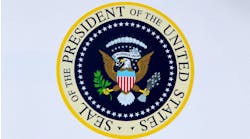Reducing the current ozone standard of 75 parts per billion to 65 ppb could carry a compliance price tag of $1.1 trillion, the National Association of Manufacturers has charged in an updated analysis of the proposed EPA rule.
The manufacturing trade group, using an updated study by NERA Economic Consulting, said the proposed rule would be the costliest in U.S. history, reducing annual GDP by $140 billion and slicing the equivalent of 1.4 million jobs on average from the economy through 2040.
Last November, EPA issued a proposal to revise the ozone standard within a range of 65 ppb to 70 ppb. EPA said the update would better protect public health, “particularly for children, the elderly and people of all ages who have lung diseases such as asthma.”
NAM argued that many parts of the nation cannot meet the existing standard and a more restrictive standard would have a serious economic impact.
“Manufacturing in the United States are in the midst of a resurgence that’s fueling job growth and economic recovery nationwide, but the proposed tightening of the ozone standard puts our momentum at great risk,” NAM President and CEO Jay Timmons stated. He said the NERA analysis confirmed NAM’s concern that the EPA proposal represents “one of the most significant threats, not just to our manufacturing sector but to our economy at large.”
The NERA analysis of the proposed rule’s cost differs significantly from EPA’s analysis. NERA found the standard would cost $1.1 trillion and reduce U.S. GDP by $1.7 trillion from 2017 to 2040. The agency found that tighter standards would cost $15 billion for a 65 ppb rule and $3.9 billion for a standard of 70 ppb.
Because California would not be required to meet the revised rule until 2032 or later, EPA estimated the costs and benefits for the state separately. It found that a 65 ppb rule would cost $1.6 billion and yield annual benefits for $2.2 billion to $4.1 billion.
The Administration's push for a more restrictive ozone standard is yet another painful example of the need for comprehensive regulatory reform."—Aric Newhouse, NAM SVP of Policy and Government Relations
EPA said the benefits would total $19 billion to $38 billion for a standard of 65 ppb and $6.4 billion to $13 billion for a 70 ppb standard. The NERA/NAM analysis did not estimate the benefits of a revised rule.
NAM said considerable progress in cleaning the air of ozone-forming emissions would continue if the current standard stayed in place. NAM estimated emissions would be reduced by another 36% from current levels.
But public health groups, including the American Lung Association and the American Public Health Association, called last May for EPA to issue a more stringent 60 ppb rule. They charged that EPA had failed to consider evidence from studies conducted since 2006 which had found that ozone levels above 60 ppb had a strong association with reduced lung function and lung inflammation, and posed a risk not to just vulnerable populations but healthy adults as well.
EPA said in a statement it had not reviewed the NERA study, but welcomed "review of our analysis, and look forward to considering all comments." The agency noted that by law it cannot consider costs in setting a health standard, but offered estimates of costs and benefits for public information and to follow Executive Branch directives. But for each ozone level it analyzed, the agency stated, "the benefits of reducing smog-forming emissions outweigh the estimated costs and industry claims consistently ignore health."




